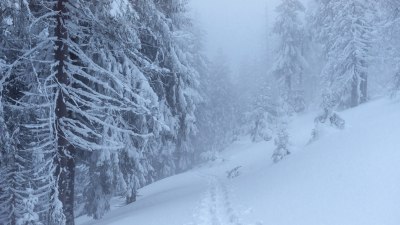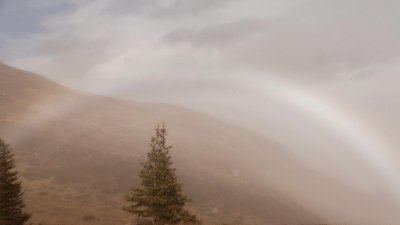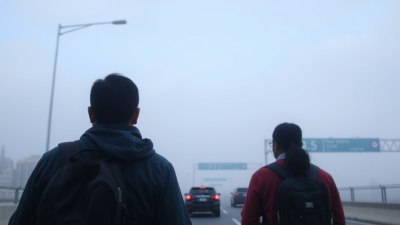Why Winter Turns Every Zoom Meeting Into a Frozen Front
Explore why winter weather causes Zoom meetings to feel like a frozen front with cold tech issues, poor lighting, and cozy distractions.

As the temperature drops and winter settles in, many have noticed a peculiar shift in the ambiance of their daily Zoom meetings. What was once a straightforward video call often turns into an experience reminiscent of weathering a frozen front. This phenomenon isn't just a metaphor for icy human interactions; it stems from a mix of physical environmental changes, technical challenges unique to the colder months, and altered human behavior. Understanding why winter transforms every Zoom meeting into a chilly affair helps participants better prepare, ensuring smoother and more engaging virtual communications during the cold season.
Winter's Impact on Home Environments and Video Calls
One key factor that turns Zoom meetings into a cold, frozen front is the dramatic change in home environments during winter. As temperatures plummet, individuals retreat indoors, often adjusting their heating, lighting, and workspace setups. The quality of lighting in winter months is typically dimmer and more reliant on artificial sources, which dramatically changes how people appear on camera. In many homes, natural sunlight is scarce, leading participants to huddle near less-than-ideal lighting systems which create shadows or washed-out visuals. This dimmer atmosphere unintentionally conveys a somber mood, making meetings feel colder and less inviting.
Moreover, colder indoor climates can subtly affect participants' energy and focus. While central heating helps, many still suffer from chilly fingers or noses if their heating systems are inconsistent. This physical discomfort can reduce engagement and responsiveness during meetings, contributing to a sense of 'coldness' in the interaction.
Technical Challenges Heightened by Winter Conditions
Another major contributor to the frozen atmosphere of Zoom meetings in winter is the increased frequency of technical difficulties. Colder weather often brings about higher incidences of weather-related power fluctuations, outages, or reduced internet speeds. For example, snowstorms can weigh down cables or interfere with satellite connections, causing interruptions or delays in video and audio streams. These technical hiccups can give meetings a fragmented, choppy quality, exacerbating frustrations and making participants feel isolated or disconnected.
Additionally, winter conditions can affect hardware performance. Laptops and webcams sometimes function less reliably in cold or damp conditions, especially if participants are working near drafty windows or portable heaters. Low battery performance due to cold, camera fogging from indoor-outdoor temperature changes, and microphone issues become more common. Consequently, these problems increase the likelihood of frozen screens or dropped calls, reinforcing the frozen front metaphor.
Psychological and Social Effects of Winter on Virtual Meetings
Beyond physical and technical factors, winter exerts a psychological influence that affects Zoom meetings. Seasonal Affective Disorder (SAD) and the general decrease in daylight during winter months impact mood, motivation, and social energy. As participants become more susceptible to feelings of lethargy and withdrawal, their enthusiasm and engagement during meetings tend to wane. The lack of face-to-face human warmth and physical presence in virtual meetings intensifies a sense of isolation, making online interactions feel emotionally colder.
Moreover, the natural tendency to 'bundle up' in bulky winter clothing or wrap oneself in blankets affects body language visibility on camera. Restrictive clothing can limit expressive gestures, and hidden facial cues reduce opportunities for nonverbal connection. The resulting muted or distant energy contributes to a collective feeling of emotional chilliness within meetings.
Distractions Unique to Winter That Affect Meeting Quality
Winter brings with it a host of distractions that can divert attention during Zoom meetings. From the comforting call of a warm beverage and cozy surroundings to the allure of fireplaces or holiday decorations, participants are surrounded by stimuli that compete with meeting content. These cozy distractions can lead to decreased attentiveness and fragmented conversations.
Additionally, practical winter-related interruptions increase. Many participants face extra responsibilities such as shoveling snow, managing home heating issues, or dealing with longer commutes due to weather delays, all of which may intrude upon their availability and focus during scheduled calls. These distractions contribute further to the sense of disruption and coldness that typifies winter Zoom meetings.
Lighting Challenges in Winter Virtual Communication
One prominently troublesome issue is poor lighting associated with shortened daylight hours. The scarcity of natural light can cause participants' faces to appear shadowy or overly illuminated by artificial sources, which generally have a cooler color temperature that tends to cast a bluish tint. This not only affects visual clarity but subtly reminds participants of the cold beyond their doors.
To combat this, many turn to additional lighting solutions such as ring lights or task lamps. However, without proper placement, these fixes can create glare or reflections that are equally distracting. Balancing warmth and brightness in artificial lighting becomes fundamental to improving the overall tone and clarity of winter Zoom meetings.
The Role of Attire and Workspace Setup During Winter Meetings
Winter influences how participants dress for their virtual meetings, often favoring layers, sweaters, scarves, and even hats. While these choices reflect comfort and warmth, they can inadvertently impact the professional atmosphere of a call. For some, it signals a casual approach, while for others, it emphasizes isolation and detachment — both emotional distances that make meetings feel colder.
Additionally, the workspace setup is affected by winter needs. Desks are often rearranged to optimize proximity to heating units or away from cold drafts, sometimes compromising ergonomics or camera angles. Keeping computers and peripherals away from windows to prevent glare or condensation leads to less optimal video framing. Such altered setups influence the physical and visual dynamics of meetings, underscoring winter's disruptive impact.
Strategies to Warm Up Winter Zoom Meetings
Recognizing the multifaceted reasons why Zoom meetings feel like a frozen front in winter allows hosts and participants to implement thoughtful strategies for improving the experience. Simple adjustments, such as adding softer, warmer lighting sources, can immediately affect the mood on video calls. Investing in warm yet professional attire suitable for on-camera appearances restores a sense of presence and energy.
Encouraging participants to share snapshots of personal cozy spaces or favorite winter-related anecdotes helps generate warmth and camaraderie. Incorporating deliberate pauses for stretching or quick breaks counters lethargy and promotes attentiveness. From a technical standpoint, ensuring robust internet connections, using wired networks when possible, and updating hardware before winter months can minimize outdoor-weather-related disruptions.
Exploring the Social Dynamics of Virtual Winter Interactions
Winter's unique social dynamics demand attention in the virtual meeting realm. The absence of physical proximity becomes more pronounced when outdoor activities that typically strengthen workplace bonds are dormant. Virtual icebreakers specifically tailored to winter themes ignite conversations and engagement, fostering connection despite the season's isolating effects.
Leaders can help combat the frozen front sensation by setting warm, inviting agendas and using video conferencing tools creatively. For instance, enabling background filters that simulate cozy environments or seasonal scenes throws off the cold ambiance. Consistently expressing empathy about winter discomforts opens channels for authentic, warm connections that are vital during extended virtual interactions.
Technological Innovations That Ease Winter Zoom Challenges
As winter-related technical issues frustrate many, technology providers continue enhancing Zoom and similar platforms with features that address these challenges. Advanced noise suppression counters the muffled sounds caused by heavy clothing or heating units. Automatic lighting adjustments and background blur options improve visual clarity despite low or inconsistent lighting.
Emerging AI-driven diagnostics help users identify and fix connectivity issues in real time before they disrupt meetings. Integration with smart home devices allows participants to maintain ideal room temperatures and lighting seamlessly during calls. These innovations are crucial in mitigating the winter freezing effect on virtual meetings.
Adapting Work Culture to the Realities of Winter Video Communication
Organizations acknowledging the setbacks winter creates for virtual communication can foster policies that promote flexible scheduling, allowing employees to join meetings when conditions are optimal. Encouraging asynchronous communication during severe weather reduces stress and technical interruptions.
Moreover, incorporating wellness check-ins during winter months addresses mental health impacts and helps ensure participants feel supported. Developing a culture that openly discusses winter challenges without stigma strengthens team resilience and warms overall organizational dynamics even through the cold season.
Future Prospects for Virtual Meetings in Cold Seasons
As remote and hybrid work models become permanent fixtures globally, optimizing virtual meeting experiences during winter will remain critical. Anticipated improvements in internet infrastructure, widespread adoption of 5G and fiber optics, and enhanced hardware robustness promise fewer disruptions.
Simultaneously, evolving social norms around video call etiquette and virtual presence, combined with tools that better emulate face-to-face warmth, will progressively reduce the frozen front feeling. Embracing winter's unique challenges with creative solutions ensures virtual meetings remain effective and pleasant all year round.
In summary, the coldness pervading winter Zoom meetings arises from a confluence of environmental changes, technical difficulties, social and psychological shifts, and altered physical settings. Awareness of these factors and proactive measures enable participants and organizations to thaw the chill and foster more vibrant, connected winter communications.











